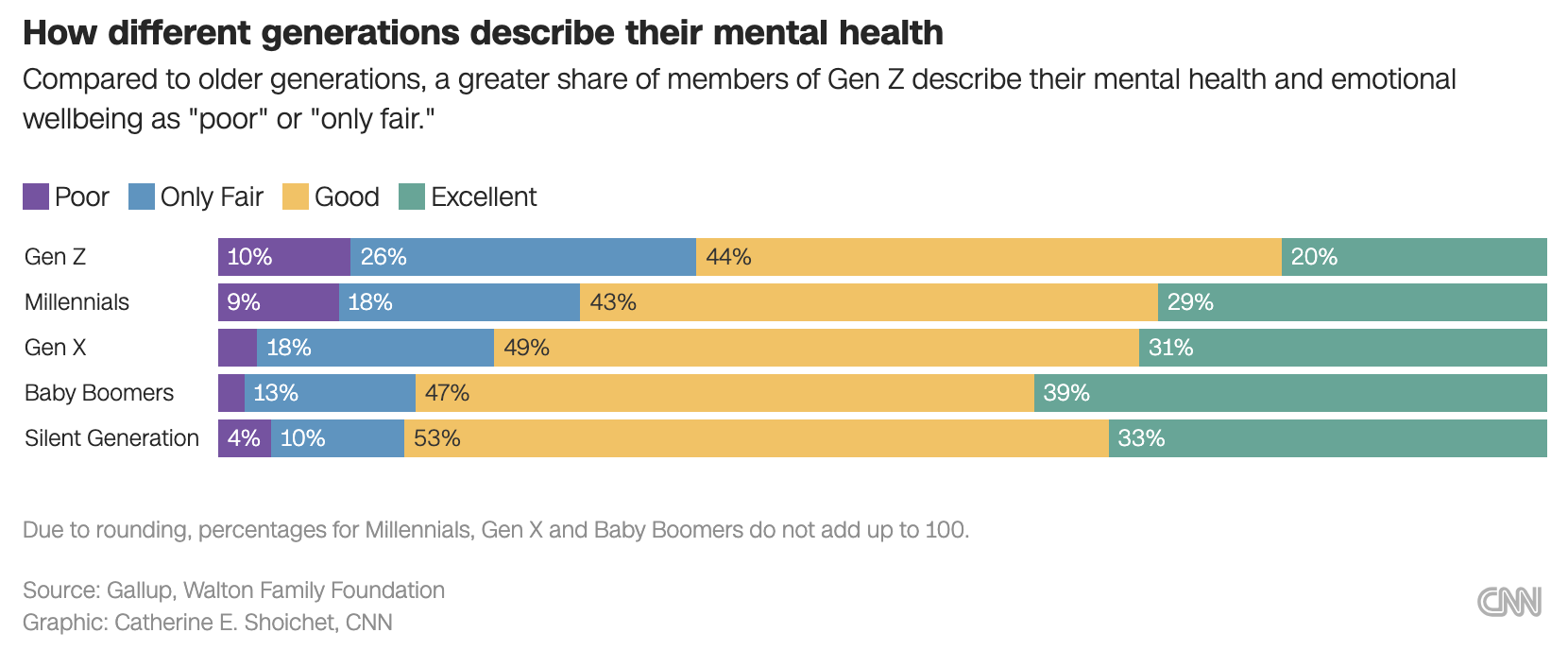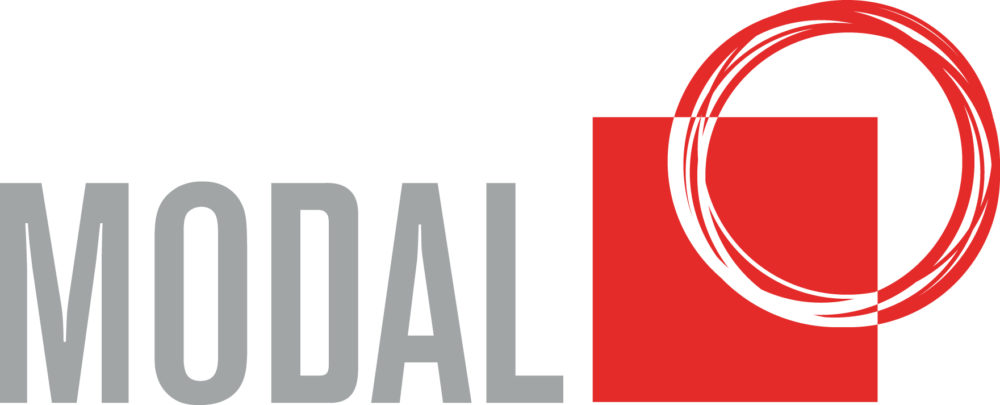With Generation Z entering the workforce in ever-increasing numbers, how do leaders best work with Gen Z’ers to optimise their motivation and performance?
Having experienced the economic and social cost of the pandemic, increased political polarisation, and emerging impacts of climate change, and being the first truly digital native generation, they are more informed about the world at large than any previous generation.
According to a Gallup study, there is some evidence that Gen Z, on average, struggles more with mental health issues than previous generations. The table below illustrates this.

In contrast, however, a key characteristic of this generation is optimism. According to the study, more than three-quarters of Gen Z agree they have a great future ahead of them. “There is quite an enduring optimism in the face of mental health struggles for this generation,” the study says.
Author and thought leader Simon Sinek says, “One of the key aspects that sets Gen Z apart is their unwavering desire for purpose-driven work—they are determined to make a meaningful impact in their careers. Organisations that align their values and missions with Gen Z’s sense of purpose will attract and retain their talent. By showcasing how their work contributes to a greater cause, companies can inspire Gen Z employees to unlock their full potential”.
Sinek also states that Generation Z thrives on collaboration and connection. They are accustomed to constant communication and seamless teamwork facilitated by digital tools. Traditional leadership styles may not resonate with Generation Z. They prefer a more collaborative and inclusive approach to leadership. Gen Z employees thrive when they feel heard and valued. This happens more often when leaders adopt a more collaborative and inclusive approach, focusing on mentorship and coaching.
According to the recent Harvard Business Review article ‘Helping Gen Z Employees Find Their Place at Work’, to earn the engagement of this group, the authors suggest seven strategies managers can leverage to create a team dynamic of collaboration, commitment, and sustained motivation:
- Increase information-sharing to alleviate fears of uncertainty
With Gen Z used to having instant access to information at their fingertips, leaders need to ensure they provide greater transparency by proactively sharing both the big picture and the detail. This not only includes providing access to different tech applications and platforms but also setting up informal communication networks such as WhatsApp groups or Slack groups. - Show them paths to career progression to incentivise them
Make sure that within the first month of hiring your Gen Z employee, you are talking to them about career possibilities. They may leave organisations quickly if they don’t have a line of sight to a career pathway. You don’t have to make any commitments, but help them see future options. Introduce them to people who started on a similar level to them and have now progressed to other roles. - Explain how their individual contributions matter
Tasks like creating a spreadsheet, digging ore out of the ground or implementing a new software application might seem like they have little to do with making a meaningful contribution. Explore ways to help employees see the bigger picture of how their role adds value in a way that either contributes to the customer experience or makes a difference to people, society or the planet. Invite each team member to briefly share their unique skills, capabilities and growth areas with the rest of the team. Have them attend meetings in customer-facing parts of the business or invite a customer in to talk to the team. Create a visual that shows the value chain of the organisation and their place in it. Define a team purpose that links to the value the team contributes. - Give them room for autonomy to keep them motivated
In Marcus Buckingham’s best-selling leadership book, ‘First Break All The Rules’, a survey of 95,000 people globally highlighted the need for managers to define the outcomes they want their people to achieve. It goes on to highlight that effective leadership is not about direct control; it’s about remote control. By defining what the end result should be, leaders will find that they don’t have to waste time trying to control the steps along the way. Define the outcome and get out of the way. The result will be employees who take responsibility and become more self-reliant. - Provide specific, constructive feedback to demonstrate you are invested in their success
73% of the youngest generation in the workforce say they will resign if they don’t get regular feedback from their managers, according to a survey by StaffCircle of 250 HR professionals and 1,000 employees. Acknowledgement vs improvement feedback needs to be at least a 3 to 1 ratio. This generation wants to know where they stand. They will also have development opportunity areas they need to build on, including people skills for many. You can also set up activities to encourage peer-to-peer feedback (or google Marshall Goldsmith and Feedforward and introduce this concept). Also, link career progression to feedback for Gen Z’ers, e.g. “Here are 3 skills I think you need to develop more in order to be considered for X role in the future”. - Harness community and connection to engage and empower
Gen Z is among the most isolated in the workforce, despite or because of their strong connection to interacting through technology. The Cigna U.S. Loneliness Index found, “Among workers aged 18-22 … 73% report sometimes or always feeling alone.” Create activities for in-person interaction that allow team building. Or, if totally constrained by Geographical separation, create a culture where virtual ‘coffee chats’ are the norm, or semi-regular meetings that are designed to share successes, check-in, get to know each other and move beyond the transactional. - Prioritise wellness and mental health to show you care
This is massive, given what we have already highlighted in terms of mental health. Create psychological safety in the team so people feel they can be vulnerable and share how they are really feeling. Ask the team to brainstorm ways to enable a culture where people prioritise looking after themselves and supporting each other. Lead by example by demonstrating what work-life balance looks like. Offer to put team members through mindfulness training to help build their mental and emotional resilience.
Even if you don’t have many Gen Z employees in your own team just yet, consider which of the 7 elements above you could apply to your Millennial team members. If attracting and retaining good young people is important, then you need to be leading the pack in terms of helping them meet their needs.
Sources:
Helping Gen Z Employees Find Their Place at Work by Jenny Fernandez, Kathryn Landis, and Julie Lee, HBR, January 18, 2023
Gallup and the Walton Family Foundation study released in September 2023. Researchers surveyed more than 3,000 people aged 12-26 in April and May of this year.
How Gen Z is Transforming the Workplace, simonsinek.com, June 9, 2023.





